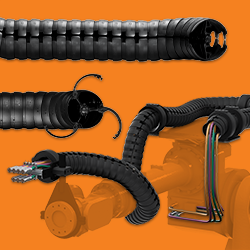NEW RESEARCH PREDICTS WHEN, HOW MATERIALS WILL ACT
Research highlighted as a top story for 2014
TALLAHASSEE, Fla. - In science, its commonly known that materials can change in a number of ways when subjected to different temperatures, pressures or other environmental forces.
A material might melt or snap in half. And for engineers, knowing when and why that might happen is crucial information.
Now, a Florida State University researcher has laid out an overarching theory that explains why certain materials act the way they do. And the work has been included as one of the highlights of the past year in a top materials science journal, Smart Materials and Structures.
"The basic idea is if I was going to tell you that I can predict that this piece of material is going to break and you asked me how confident I am this is really true, we have to resort to statistics and probability," said William Oates, professor of mechanical engineering at the FAMU-FSU College of Engineering. "Ultimately, we would like to say that this material has a 5 percent probability of breaking, for example."
For Oates paper, he specifically examined ferroelectric materials. Ferroelectric materials are materials that experience spontaneous electric polarization, meaning the positive and negative charges occur in opposite directions and can also be reversed. Importantly, the change in charge also produces a shape change that provides a novel material that can be used as an actuator or a sensor or both simultaneously.
Ferroelectric materials are commonly used in the biomedical industry for viewing inside the body using ultrasound imaging. Scientists are also trying to use them for new solar cells.
"The material is pretty pervasive in a number of fields," Oates said. "So understanding how the material behaves and trying to come up with new compositions is a pretty active area of research."
Like many scientific endeavors, nothing came easy. His original paper laid out a significantly different theory and was rejected by the journal, so he had to completely go back to the drawing board.
He then stumbled across a quantum theorem and began working with it, comparing quantum simulations of electronic structures with continuum theories often used in engineering design.
It gave him the answers he needed and a stronger backing for a more unified continuum theory that is much faster to calculate relative to quantum mechanics. However, continuum approximations still contain uncertainty.
To address this issue, he used a special statistical method, known as Bayesian statistics, to quantify confidence in the models predictive power.
"With this new tool, we can apply it to all sorts of materials and basically quantify how good are we as engineers at approximating nature without spending countless numbers of hours on a computer," Oates said.
Featured Product

igus - triflex R robot dresspacks
Properly managed cables on a multi-axis robot are the difference between successful, failure-free operation and frequent unplanned downtime and lost profits. Discover how triflex® robot dresspacks are designed to protect cables in multi-axis motion - extending cable life, minimizing costs, and reducing unplanned downtime.
